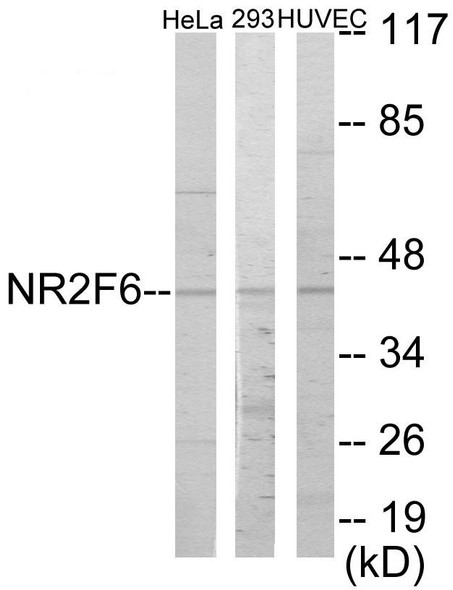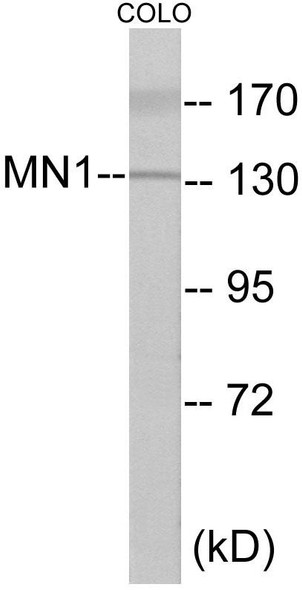Description
JIP2 Colorimetric Cell-Based ELISA
The JIP2 Colorimetric Cell-Based ELISA Kit is a cutting-edge tool designed for the sensitive detection of JIP2 protein levels in cell lysates. This kit offers high specificity and accuracy, enabling researchers to obtain reliable and reproducible results for a variety of research applications.JIP2, also known as JNK-interacting protein 2, is a critical regulator of cellular processes such as apoptosis, cell migration, and cytoskeleton organization. Dysregulation of JIP2 has been implicated in various diseases, including cancer, neurodegenerative disorders, and inflammatory conditions.
Therefore, the accurate measurement of JIP2 levels is essential for understanding its role in disease pathology and potential therapeutic targeting.With its easy-to-use format and precise quantification of JIP2 protein levels, the JIP2 Colorimetric Cell-Based ELISA Kit is a valuable tool for researchers seeking to unravel the complex mechanisms underlying disease development and progression. Order yours today and advance your research with confidence.
| Product Name: | JIP2 Colorimetric Cell-Based ELISA |
| Product Code: | CBCAB01083 |
| ELISA Type: | Cell-Based |
| Target: | JIP2 |
| Reactivity: | Human, Mouse, Rat |
| Dynamic Range: | > 5000 Cells |
| Detection Method: | Colorimetric 450 nmStorage/Stability:4°C/6 Months |
| Format: | 96-Well Microplate |
The JIP2 Colorimetric Cell-Based ELISA Kit is a convenient, lysate-free, high throughput and sensitive assay kit that can detect JIP2 protein expression profile in cells. The kit can be used for measuring the relative amounts of JIP2 in cultured cells as well as screening for the effects that various treatments, inhibitors (ie siRNA or chemicals), or activators have on JIP2.
Qualitative determination of JIP2 concentration is achieved by an indirect ELISA format. In essence, JIP2 is captured by JIP2-specific primary antibodies while the HRP-conjugated secondary antibodies bind the Fc region of the primary antibody. Through this binding, the HRP enzyme conjugated to the secondary antibody can catalyze a colorimetric reaction upon substrate addition. Due to the qualitative nature of the Cell-Based ELISA, multiple normalization methods are needed:
| 1. | A monoclonal antibody specific for human GAPDH is included to serve as an internal positive control in normalizing the target absorbance values. |
| 2. | Following the colorimetric measurement of HRP activity via substrate addition, the Crystal Violet whole-cell staining method may be used to determine cell density. After staining, the results can be analysed by normalizing the absorbance values to cell amounts, by which the plating difference can be adjusted. |
| Database Information: | Gene ID: 23542, UniProt ID: Q13387, OMIM: 607755, Unigene: Hs.558180 |
| Gene Symbol: | JIP2 |
| Sub Type: | None |
| UniProt Protein Function: | MAPK8IP2: The JNK-interacting protein (JIP) group of scaffold proteins selectively mediates JNK signaling by aggregating specific components of the MAPK cascade to form a functional JNK signaling module. JIP2 inhibits IL1 beta-induced apoptosis in insulin-secreting cells. May function as a regulator of vesicle transport, through interactions with the JNK-signaling components and motor proteins. Belongs to the JIP scaffold family. 4 isoforms of the human protein are produced by alternative splicing. |
| UniProt Protein Details: | Protein type:Protein kinase, regulatory subunit; Activator Chromosomal Location of Human Ortholog: 22q13.33 Cellular Component: protein complex; cell soma; cytoplasm Molecular Function:MAP-kinase scaffold activity; protein binding; kinesin binding; beta-amyloid binding; protein complex binding; structural molecule activity; protein kinase binding; protein kinase activator activity Biological Process: nonassociative learning; regulation of synaptic transmission, glutamatergic; behavioral fear response; dendrite morphogenesis; MAPKKK cascade; mating behavior; signal complex assembly; social behavior; regulation of JNK cascade; positive regulation of stress-activated MAPK cascade; positive regulation of protein kinase activity; JNK cascade; regulation of receptor activity; regulation of excitatory postsynaptic membrane potential |
| NCBI Summary: | The protein encoded by this gene is closely related to MAPK8IP1/IB1/JIP-1, a scaffold protein that is involved in the c-Jun amino-terminal kinase signaling pathway. This protein is expressed in brain and pancreatic cells. It has been shown to interact with, and regulate the activity of MAPK8/JNK1, and MAP2K7/MKK7 kinases. This protein thus is thought to function as a regulator of signal transduction by protein kinase cascade in brain and pancreatic beta-cells. Alternatively spliced transcript variants encoding distinct isoforms have been reported for this gene. [provided by RefSeq, Jul 2008] |
| UniProt Code: | Q13387 |
| NCBI GenInfo Identifier: | 6912492 |
| NCBI Gene ID: | 23542 |
| NCBI Accession: | NP_036456.1 |
| UniProt Secondary Accession: | Q13387,Q96G62, Q99771, Q9NZ59, Q9UKQ4, |
| UniProt Related Accession: | Q13387 |
| Molecular Weight: | 87,975 Da |
| NCBI Full Name: | C-Jun-amino-terminal kinase-interacting protein 2 isoform 1 |
| NCBI Synonym Full Names: | mitogen-activated protein kinase 8 interacting protein 2 |
| NCBI Official Symbol: | MAPK8IP2 |
| NCBI Official Synonym Symbols: | IB2; JIP2; PRKM8IPL |
| NCBI Protein Information: | C-Jun-amino-terminal kinase-interacting protein 2; IB-2; islet-brain 2; JNK-interacting protein 2; homologous to mouse JIP-1; JNK MAP kinase scaffold protein 2; JNK MAP kinase scaffold protein JIP2 |
| UniProt Protein Name: | C-Jun-amino-terminal kinase-interacting protein 2 |
| UniProt Synonym Protein Names: | Islet-brain-2; IB-2; JNK MAP kinase scaffold protein 2; Mitogen-activated protein kinase 8-interacting protein 2 |
| UniProt Gene Name: | MAPK8IP2 |
| UniProt Entry Name: | JIP2_HUMAN |
| Component | Quantity |
| 96-Well Cell Culture Clear-Bottom Microplate | 2 plates |
| 10X TBS | 24 mL |
| Quenching Buffer | 24 mL |
| Blocking Buffer | 50 mL |
| 15X Wash Buffer | 50 mL |
| Primary Antibody Diluent | 12 mL |
| 100x Anti-Phospho Target Antibody | 60 µL |
| 100x Anti-Target Antibody | 60 µL |
| Anti-GAPDH Antibody | 60 µL |
| HRP-Conjugated Anti-Rabbit IgG Antibody | 12 mL |
| HRP-Conjugated Anti-Mouse IgG Antibody | 12 mL |
| SDS Solution | 12 mL |
| Stop Solution | 24 mL |
| Ready-to-Use Substrate | 12 mL |
| Crystal Violet Solution | 12 mL |
| Adhesive Plate Seals | 2 seals |
The following materials and/or equipment are NOT provided in this kit but are necessary to successfully conduct the experiment:
- Microplate reader able to measure absorbance at 450 nm and/or 595 nm for Crystal Violet Cell Staining (Optional)
- Micropipettes with capability of measuring volumes ranging from 1 µL to 1 ml
- 37% formaldehyde (Sigma Cat# F-8775) or formaldehyde from other sources
- Squirt bottle, manifold dispenser, multichannel pipette reservoir or automated microplate washer
- Graph paper or computer software capable of generating or displaying logarithmic functions
- Absorbent papers or vacuum aspirator
- Test tubes or microfuge tubes capable of storing ≥1 ml
- Poly-L-Lysine (Sigma Cat# P4832 for suspension cells)
- Orbital shaker (optional)
- Deionized or sterile water
*Note: Protocols are specific to each batch/lot. For the correct instructions please follow the protocol included in your kit.
| Step | Procedure |
| 1. | Seed 200 µL of 20,000 adherent cells in culture medium in each well of a 96-well plate. The plates included in the kit are sterile and treated for cell culture. For suspension cells and loosely attached cells, coat the plates with 100 µL of 10 µg/ml Poly-L-Lysine (not included) to each well of a 96-well plate for 30 minutes at 37°C prior to adding cells. |
| 2. | Incubate the cells for overnight at 37°C, 5% CO2. |
| 3. | Treat the cells as desired. |
| 4. | Remove the cell culture medium and rinse with 200 µL of 1x TBS, twice. |
| 5. | Fix the cells by incubating with 100 µL of Fixing Solution for 20 minutes at room temperature. The 4% formaldehyde is used for adherent cells and 8% formaldehyde is used for suspension cells and loosely attached cells. |
| 6. | Remove the Fixing Solution and wash the plate 3 times with 200 µL 1x Wash Buffer for five minutes each time with gentle shaking on the orbital shaker. The plate can be stored at 4°C for a week. |
| 7. | Add 100 µL of Quenching Buffer and incubate for 20 minutes at room temperature. |
| 8. | Wash the plate 3 times with 1x Wash Buffer for 5 minutes each time. |
| 9. | Add 200 µL of Blocking Buffer and incubate for 1 hour at room temperature. |
| 10. | Wash 3 times with 200 µL of 1x Wash Buffer for 5 minutes each time. |
| 11. | Add 50 µL of 1x primary antibodies (Anti-JIP2 Antibody and/or Anti-GAPDH Antibody) to the corresponding wells, cover with Parafilm and incubate for 16 hours (overnight) at 4°C. If the target expression is known to be high, incubate for 2 hours at room temperature. |
| 12. | Wash 3 times with 200 µL of 1x Wash Buffer for 5 minutes each time. |
| 13. | Add 50 µL of 1x secondary antibodies (HRP-Conjugated AntiRabbit IgG Antibody or HRP-Conjugated Anti-Mouse IgG Antibody) to corresponding wells and incubate for 1.5 hours at room temperature. |
| 14. | Wash 3 times with 200 µL of 1x Wash Buffer for 5 minutes each time. |
| 15. | Add 50 µL of Ready-to-Use Substrate to each well and incubate for 30 minutes at room temperature in the dark. |
| 16. | Add 50 µL of Stop Solution to each well and read OD at 450 nm immediately using the microplate reader. |
(Additional Crystal Violet staining may be performed if desired – details of this may be found in the kit technical manual.)






